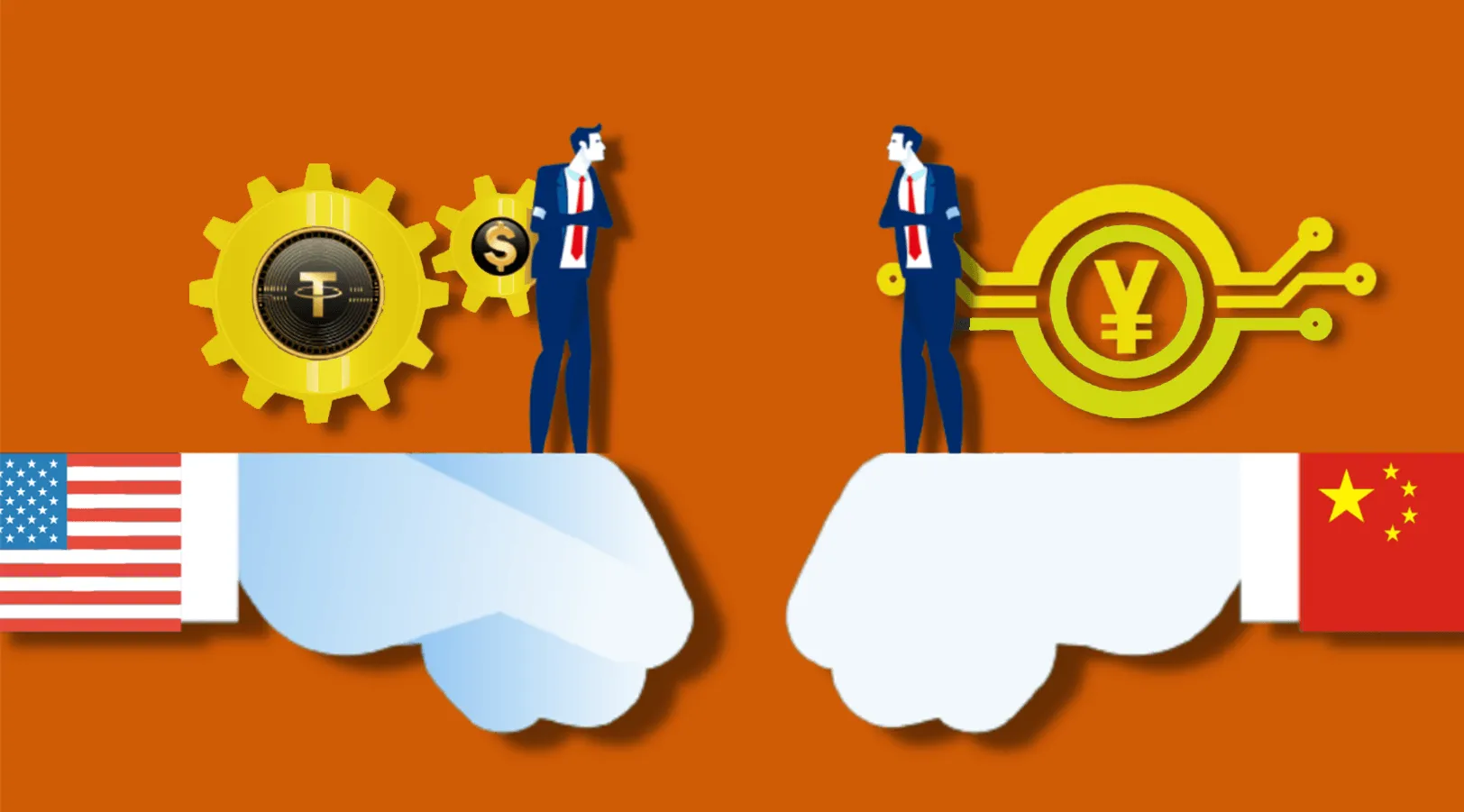Is America Losing the Digital-Currency Race?
WASHINGTON – America’s global position is slipping. The reign of the dollar is waning as China, Russia, and other potentially hostile countries digitize their currencies and create parallel payment networks that can circumvent the long arm of US and Western sanctions.
Or so we’re told. This narrative has been gaining traction among Western central banks, think tanks, and national-security analysts, who are right to be concerned about the future of money and payments.The Bank for International Settlements (a veritable centralbankofcentralbanks) recently released a report suggesting that central banks should introduce central bank digital currencies (CBDC) to keep Big Tech out of nationalpaymentsystems.
It is certainly true that in the long run, the US dollar’s continuing dominance as the world’s most trusted global reserve currency is not guaranteed. But with the future of money and payments, past is prologue. Today’s doomsayers are wrong to think that the United States is losing ground. Such arguments in the media may help to attract clicks and drive engagement online, but they ignore the new elephant in the room: privately issued digital currencies, many of which are “stablecoins.”
Unlike Bitcoin or Dogecoin, whose value fluctuates widely, limiting their use as a means of payment or store of value, stablecoins are tethered to transparent, auditable assets (like US dollar deposits or dollar-denominated holdings) and can reliably be used for everything from making payments to sending remittances seamlessly across borders. They are essentially CBDCs’ digital twins. The more that the debate focuses on the supposed clash between stablecoins – like Diem or the USD Coin (USDC) – and CBDCs, the more the bigger story gets missed. In Dollars We Trust
In that bigger story, the US is leading the world in a critically important industry. A vibrant, expanding ecosystem of responsible, well-regulated digital financial-services firms and trusted privately issued digital currencies are meeting the growing demand for Internet-native payment systems. And at the center of this explosion of digital currencies is the US dollar. (USDC, a dollar digital currency managed by the CentreConsortium – including my employer, Circle – is the fastest-growing dollar digital currency in the world.)
As the most widely referenced stable asset underpinning this new ecosystem, the greenback’s position of trust will only grow stronger. Public blockchains, open-source technologies, and growing regulatory clarity for the industry have made the US the go-to place for digital financial-services firms. These companies are now hiring people from across the country and around the world to build platforms and operations that will have a global presence; many are already overcoming the buyersandspenders’ remorse that plagued blockchain’s maiden decade.
Investments in new payment and money platforms tend to gravitate toward countries that are embracing blockchain, digital currencies, and other foundational technologies. A good example is Singapore, which has been rebranding itself as the “fintechnation.” But notwithstanding the distributed nature of the blockchain ecosystem, this competitive, free-market activity is increasingly coalescing in the US as well.
Globally, fintech entrepreneurs value the safety, soundness, and longstanding trust that US financial and democratic institutions command. It is for this reason that more than $100 billion in dollar-referenced stablecoins have been put into circulation, serving as the real-world scaffolding for the broader cryptocurrency asset class (which surged above $2 trillion this year).
As a foundational technology, blockchain is powering a booming creator economy, decentralized financial services (DeFi), and institutional-grade securities that are collateralized with cryptocurrencies and payable in stablecoins. While these emerging financial services may not be right for all investors and individuals, the players’ rights to access novel financial instruments that overcome the limitations of brick-and-mortar banking should be protected. These innovations are increasingly well regulated and enjoying institutional adoption.The Crypto Boom Now 12 years old, the digital-currency industry is thriving. Blockchain distributed-ledger technologies emerged from the economic wreckage of the 2008 financial crisis and came out of beta in 2018, when they were the leading topic of discussion at the World Economic Forum’s annual meeting in Davos. In 2020, after a market correction known as “crypto winter,” Bitcoin shook off the cold. And now, a new generation of financial-services firms is showing how digital currencies and cryptographic assets can be used to complete the global financial system, rather than to compete with its core institutions. The flight to trust and quality that has given the US and the dollar its global standing in the macroeconomic environment is echoed in the growing blockchain ecosystem.
This is a positive development, not least because it offers a third way beyond the flawed “CBDC vs. stablecoins” debate – one that negates the potentially Orwellianrisks posed by CBDCs. Lost in that narrow framing is the fact that most value-added money in circulation today already rides on private or consortium-led rails. Moreover, when properly designed and regulated, privately issued dollar digital currencies do not undermine any of the central tenets of the financial system, including the presumption of financial privacy, economic soundness (in terms of prudential asset management), and the availability of a widely used means of payment, unit of account, and store of value on the internet.
This ease of use helps to explain why USDCs in circulation have exploded from four billion coins in January of this year to more than 25 billion today (all backed by dollar-denominated reserve assets held in the care, custody, and control of the US-regulated banking system). Already, this meteoric growth has powered more than $700 billion in on-chain transactions.
Moreover, privately issued digital currencies are now the currencies of choice for crypto-native markets, including the rapidly growing creator economy in non-fungible tokens. Arguably the world’s first digital “Veblen goods,” NFTs have the power to unlock trillions of dollars of assets that are on the sidelines. This market-led model is the one that central banks around the world should embrace. Not only is it in keeping with the existing approach for all value-added money in circulation today, it also would preserve the two-tiered banking and financial system through which financial and monetary policy functions.
Looking past the dead-end “CBDC vs. stablecoins” debate, one can already see how ongoing free-market activity could translate into the US “winning” the digital-currency race. Digital numismatic innovations will continue to enshrine in code the first principles that have made the US financial system the global standard of trust.
As former US Secretary of the Treasury Hank Paulson notes in Foreign Affairs, a trusted global currency should be understood as the sum of many parts. A CBDC’s position depends not just on its desirability and reliability as a monetary unit, but also on the tone, temperament, and tenor of its issuing authority’s monetary, political, and security policies, as well as on the broader financial architecture that is constructed around it.
Hence, while the BIS takes a somewhat dim view on the industry, other authorities, including key US Federal Reserve officials, are pointing out that not all stablecoins are created equal. And in many circles, the knee-jerk determination to launch a government-issued digital dollar is being met with reasonable skepticism.
In thinking about the future of money, and of any specific currency, the real geostrategic and economic battle lines will be drawn in the area of payments. The efficacy of a currency and the ability to enforce global financial-crime compliance standards depends on the openness, trust, access, and availability of payment rails. Viewed in these terms, one can already see that legacy financial systems are increasingly vulnerable to cyber threats and technological obsolescence.
Worse, most have been designed to serve only those born in the “right” country or postal code. Blockchain-based financial systems are offering solutions to problems of trust, privacy, and ownership that conventional analog designs have failed to address at scale.Leading from Behind
The fastest way for the US or other Western economies to lose the Currency Cold War, as some analysts are calling it, would be to launch a centrally managed CBDC. Not only would that turn central banks into retail banks; it also could undermine many of the central tenets of the global financial system. Chief among these, at least in free-market economies, is that there should be a safety gap between central banks, the market, people, and their money.
With a CBDC, central banks would have a backdoor directly into your bank account, as well as the means to monitor every digital transaction made. At a time when open competitive global markets are building on third-generation blockchains and fast-evolving mobile and e-money standards, this is no time to engage in such privacy-jeopardizing experiments.
Considering the risks, the Fed would be welladvised not to rush ahead with launching a CBDC, especially not when the dollar is already the most widely referenced asset for stablecoins and the broader fintech ecosystem that is emerging around the world. Ironically, despite all the histrionics over the threat that cryptocurrencies will disintermediate the financial system, destabilize markets, and circumvent compliance rules to prevent financial crime, the crypto industry is pulling banking into the twenty-first century. The big question for this new era is whether it will be open to everyone.
In this new world, there are fewer bank holidays and more options; and in the case of new-generation trusted digital currencies, sound regulation and bank custody of the underlying reference assets are prerequisites for operating. In this way, the dynamic and competitive US crypto economy is protecting both the two-tiered banking system and the reliance on the dollar. Working fully within the US regulatory perimeter, some breakthrough firms are achieving meteoric public offerings in US capital markets, which themselves are being transformed by programmable money and DeFi. At $86 billion, Coinbase’s direct listing made it the most valuable exchange in the US – more valuable even than the 173-year-old CME Group, which gave cryptocurrencies a mainstay position in the US by offering Bitcoin futures in 2017.
In the crypto industry’s next wave, we will see more bridges being built to increase adoption by merchants and retailers globally; the underlying technology – blockchain – will fade deeper into the background, becoming simply another part of the foundation of the global financial system. We will see much-needed competition in global remittance corridors that have long been subjected to monopolistic or duopolistic conditions, heavy tolls, and slow service for the people who need low-cost, trusted, real-time financial settlements the most.
Digital currencies will also usher in a world of programmable money, by unlocking one blockchain technology’s untapped capabilities: machine-to-machine financial ledgering. JPMorgan’s blockchain unit recently executed a test-run transaction between satellites in orbit using this technology. This sets the stage for seamless payments from all kinds of connected devices, from smart refrigerators to autonomous vehicles. The implications are far-reaching, as are the opportunities to make financial exchanges more transparent, auditable, and accessible – traits that are increasingly creating exponential gains in financial crime compliance for blockchain-based transactions.
All law-abiding people should have access to financial services and the global financial system, regardless of where they live. The best way to uphold that basic right is through trusted digital currencies and blockchain-based payment systems operating on digital public goods (like the internet itself). These are among the most powerful tools that free-market economies and liberal democracies have against the forces of authoritarianism, economic nationalism, and retrenchment. Embracing digital currencies, appropriately regulating the sector, and enabling thousands of flowers to keep blooming from US financial soil can lift people and entire countries into new forms of prosperity.
The US was once dismissed as a renewable-energy laggard and as the country that mothballed its space program; but it is now playing host to the leading innovators and firms in both markets. The same holds true for the future of financial services and payments. As a foundational technology second only to the internet, blockchain will remain a leading protagonist in the story – and so, too, will the dollar.
Copyright: Project Syndicate, 2019.
www.project-syndicate.org








